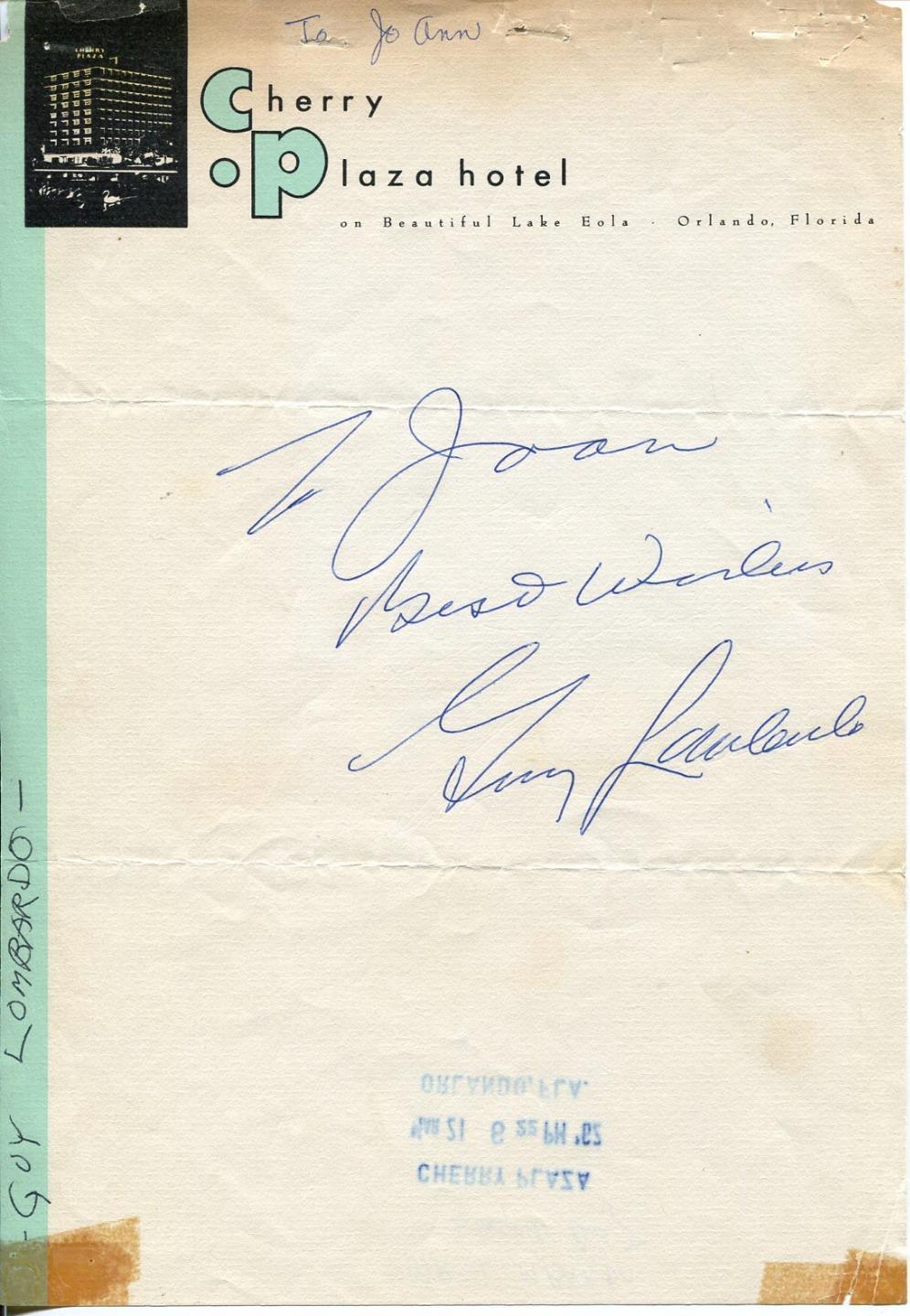-40%
PAUL WHITEMAN & GEORGE BURNS Signed 1942 Paycheck JAZZ!
$ 211.2
- Description
- Size Guide
Description
1942 paycheck from George Burns & Gracie Allen, signed by George Burns on front, and endorsed with Paul Whiteman's signature on back.The story behind the item at auction:
Paul Whitman's reign as the declared "King of Jazz" was relatively short-lived. Although he played an integral part in bringing jazz to the masses, and introduced many of jazz's future stars (including Bix Beiderbecke, Tommy Dorsey, Joe Venuti and Eddie Lang), by the end of the 1930s his star had begun to fade.
In the early 1940s Mr. Whiteman took a job with CBS Radio as the house orchestra director for the music and comedy show of George Burns and Gracie Allen. This paycheck for 0.00 was made out to Mr. Whitman by George Burns for his services as orchestra leader.
The check is from the account of George N. Burns and Grace Allen Burns, is dated March 18, 1942, and is signed by George N. Burns and an illegible countersigner. The back of the check is endorsed with the signature of Paul Whiteman.
The check measures 3 x 8.25"" and is in excellent condition.
Also offered with this check as a bonus, is a vintage 1920s photograph of the Paul Whitman orchestra in their heyday. The photo is in fair condition, someone has unfortunately punched holes in it for a looseleaf binder.(Please note: signature on the bonus photo is a pre-printed facsimile).
From the All Music Guide:
Paul Whiteman:
Because press agents dubbed him "The King of Jazz" in the 1920s, Paul Whiteman has always been considered a controversial figure in jazz history. Actually, his orchestra was the most popular during the era and at times (despite its size) it did play very good jazz; perhaps "King of the Jazz Age" would have been a better title.
His superior dance band used some of the most technically skilled musicians of the era in a versatile show that included everything from pop tunes and waltzes to semi-classical works and jazz. Trumpeter Henry Busse (featured on "Hot Lips" and "When Day Is Done") was Whiteman's main star during the 1921-1926 period. Seeking to "make a lady out of jazz," Whiteman's symphonic jazz did not always swing, but at Aeolian Hall in 1924 he introduced "Rhapsody in Blue" (with its composer George Gershwin on piano) in what was called "An Experiment in Modern Music." Red Nichols and Tommy Dorsey passed through the band but it was in 1927, with the addition of Bix Beiderbecke, Frankie Trumbauer, and Bing Crosby (the latter originally featured as part of a vocal trio called the Rhythm Boys), that Whiteman began to finally have an important jazz band. Joe Venuti and Eddie Lang soon joined up, and many of Whiteman's recordings of 1927-1930 (particularly the ones with Bill Challis arrangements) are among his finest. After Beiderbecke left the band in 1929 and Whiteman filmed the erratic but fascinating movie The King of Jazz in 1930, the Depression forced the bandleader to cut back on his personnel (which at one time included two pianos, tuba, bass sax, string bass, banjo, and guitar in its rhythm section). Although his orchestra in the 1930s at times featured Bunny Berigan, Trumbauer, and both Jack and Charlie Teagarden, Whiteman's music was considered old hat by the time of the swing era and he essentially retired (except for special appearances) by the early '40s.
All of our autographed items are 100% guaranteed authentic for life. Comes with Certificate of Authenticity upon request.
We accept Visa, Mastercard, Discover, American Express via PayPal.
MULTIPLE AUCTION WINNERS SAVE ON SHIPPING!












